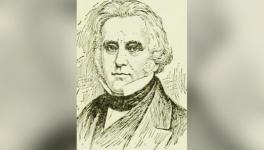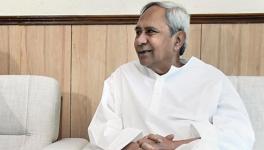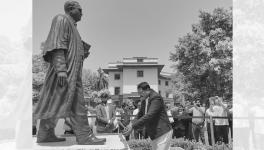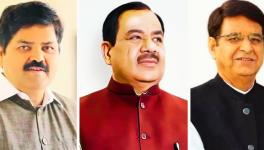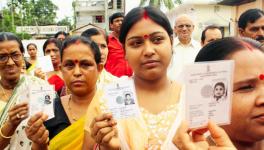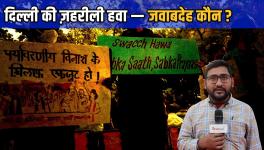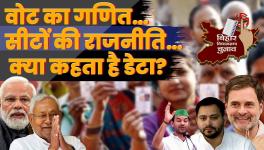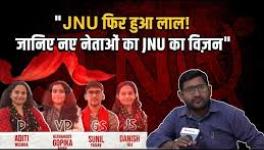Does Babasaheb’s Ideology Match With Hindu Nationalist Politics?
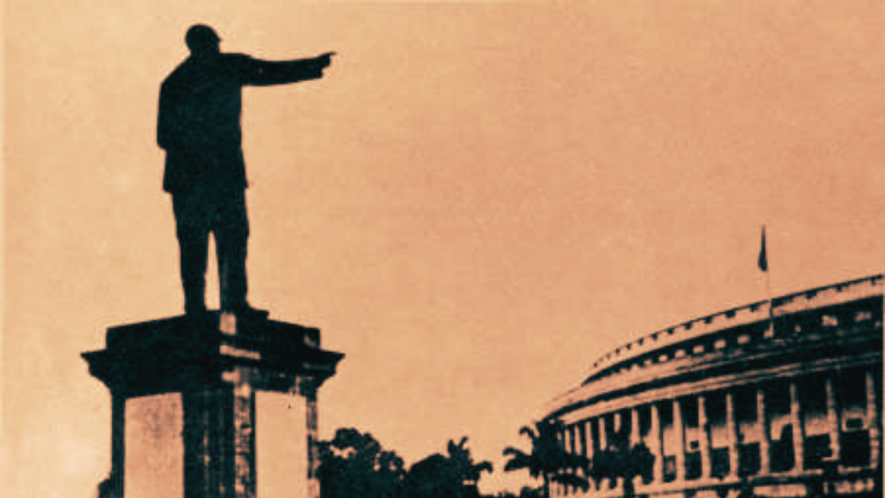
Image Credit: Wikimedia Commons
As the “insult” hurled on Babasaheb by Amit Shah in Lok Sabha is coming under heavy criticism across the country, Right- wing Hindu nationalist ideologues are trying to create a narrative that Babsaheb was on same page as the politics of of Savarkar, Rashtriya Swayamsevak Sangh, and Bharatiya Janata Party in particular. (Balbir Punj on X: "The resurrection of Dr Ambedkar "). They are trying to pick and choose selectively from Ambedkar’s massive work, a bit from here and a bit from there, to construct a picture as to how much Babasaheb appreciated the ideology of Hindutva.
They go on to quote Ambedkar that Swami Shraddhanand was the “the greatest and most sincere champion of the Untouchables”. They ignore the fact that that same Swami was involved in Shuddhi, ‘Conversion of Muslims to Hinduism’. This is what annoyed the Muslim clerics.
On this Shuddhi, Ambedkar responded, “If the Hindu society desires to survive, it must think not of adding to its numbers but increasing its solidarity and that means the abolition of caste. The abolition of castes is the real sangathan of the Hindus, and when sangathan is achieved by abolishing castes, shuddhi will be unnecessary.” This was parallel and opposite to Tanzim by Tablighi Jamaat, which was trying to convert Hindus into Islam. Though Shraddhanand later became part of the Indian National Congress, he was also part of Hindu Sangthan, a part of the revitalised Hindu Mahasabha committed to establishing a Hindu Nation.
New constructs are now being floated that Ambedkar and Savarkar are two sides of the same coin. True that Savarkar started the Patit Pavan temple that allows entry of Dalits into temples. As per Babasaheb, this will create a separate temple where only Dalits will visit. “An editorial in the April 12, 1929 issue of “Bahishkrit Bharat” states that Ambedkar had opposed the construction of the Patit Pawan temple from the very beginning. He believed that these temples would later be called temples for the untouchables.” However, Ambedkar did appreciate Savarkar’s efforts. Though he felt they were irrelevant.
These are some points that are being raised by Hindutva ideologues. They go hyper while describing Ambedkar’s relations with Congress. Some of them argue that after the death of Gandhi and Patel, Nehru became authoritarian and ignored the Opposition. BJP leader and Union Home Minister Amit Shah said that Ambedkar resigned from the Nehru cabinet due to “differences” with Nehru on the issue of Article 370, foreign policy and on the condition of SC/STs (Scheduled Castes/Tribes).
The crux of the issue is that the major reason for Ambedkar resigning from the cabinet was his disappointment with the shabby treatment given to the Hindu Code Bill. A huge opposition and meetings against the Bill were organised by RSS. Their volunteers demonstrated in front of Parliament. The peak of this was the massive protest in Ramlila Maidan on December 11, 1949, in which effigies of Ambedkar and Nehru were burnt.
Opposing the Hindu Code Bill, The Organiser (mouthpiece of the RSS), December 7, 1949, wrote: "We oppose the Hindu Code Bill. We oppose it because it is a derogatory measure based on alien and immoral principles. It is not a Hindu Code Bill. It is anything but Hindu.” The result of this aggressive campaign by RSS on the Hindu Code Bill was that it had to be delayed and diluted. This was the painful moment for Babasaheb, that led him to resign.
The question of Manusmriti, the Chaturvarnya, was a crucial part of the differences between Ambedkar and Savarkar to BJP. While on December 25, 1927, Babasaheb burnt the Manusmriti, the second sarsanghchalak of RSS, M.S. Golwalkar went on to write eulogies on Manusmriti.
Savarakar also detailed his support to Chaturvarnya and praised Manusmiriti: “Manusmriti is that scripture which is most worshipable after Vedas for our Hindu Nation and which from ancient times has become the basis of our culture-customs, thought and practice. This book for centuries has codified the spiritual and divine march of our nation. Even today the rules which are followed by crores of Hindus in their lives and practice are based on Manusmriti. Today Manusmriti is Hindu Law. That is fundamental.” And “The worst [thing] about the new Constitution of Bharat is that there is nothing Bharatiya about it… [T]here is no trace of ancient Bharatiya constitutional laws, institutions, nomenclature and phraseology in it”.
The central point of difference that Ambedkar had with the Hindutva ideology is being pushed under the carpet. On October 13, 1935, Ambedkar spoke in a meeting in Yeola near Nasik, dropping a ‘bombshell’ when he said, “I will not die as a person who calls himself a Hindu!” As per him, this religion has no place for liberty, compassion and equality. In the revised edition of his book, Thoughts on Pakistan, he opposed the formation of Islamic Pakistan as that may pave the way for Hindu Raj or Rashtra and that will be a “big calamity” for its people.
As he declared this, there were many pressures on him to embrace Sikhism or Islam. Dr. Moonje from Hindu Mahasabha struck a pact with Ambedkar that if he avoided conversion to Islam, Hindu Mahasabha would not oppose his move. Babasaheb’s own deeper studies led him to choose Buddhism.
Today, the BJP is trying to project that they have “honoured” Babasaheb by erecting his statues, raising an International Museum in his memory and other symbolic things. These are identity-related issues, while the crux of Babasaheb’s values remains undermined. When the Mandal Commission (on reservations) was implemented, the BJP resorted to kamandal (Hindutva) politics. As veteran BJP leader L K Advani was arrested during his Rath Yatra (as a part of kamandal politics), BJP, which was part of the parties supporting V P Singh’s government, withdrew its support and the government fell.
Congress, along with Hindu Mahasabha, opposed Ambedkar in Lok Sabha elections. Yet, it was Congress again that ensured that he was made a Rajya Sabha member. He was made a member of the Interim Government and also Chairman of the drafting committee of the Indian Constitution.
BJP’s anxiety to prove that Ambedkar was part of Hindutva politics is, therefore, a pure concoction to derive legitimacy from the memory of a person who stood totally against their very ideology of a Hindu Nation.
What an irony, that those who stood/stand for a Hindu Nation are today trying to project Ambedkar, who was opposed to Hindu Rashtra and wanted to have democratic, secular republic, as a part of their ideological parivar!
The writer is a human rights activist, who taught at IIT Bombay. The views are personal.
Get the latest reports & analysis with people's perspective on Protests, movements & deep analytical videos, discussions of the current affairs in your Telegram app. Subscribe to NewsClick's Telegram channel & get Real-Time updates on stories, as they get published on our website.









